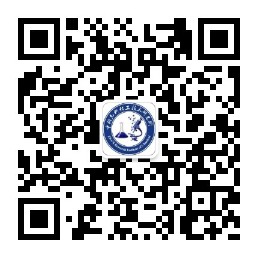歡迎訪問中科光析科學技術研究所官網!
- 聯系我們
- 關注微信

歡迎訪問中科光析科學技術研究所官網!


免費咨詢熱線
400-635-0567|
船用三相同步發電機檢測項目報價???解決方案???檢測周期???樣品要求? |
點 擊 解 答?? |
GB/T 2820的本部分規定了由機械和電氣旋轉設備組合而成的旋轉不間斷電源(UPS)的性能要求和試驗方法。本部分適用的電源,主要為用戶提供不間斷交流電。當無市電輸入運行時,輸入能量由儲存的能量或者往復式內燃機提供,由一臺或多臺旋轉電機輸出電能。 本部分適用的交流電源,主要為固定陸用和船用設施提供不間斷電能。不包括為航空、陸上車輛和機車供電的電源。也不包括通過靜態變換產生輸出電能的電源。 本部分對使用旋轉UPS改善交流供電品質、實現電壓和/或電流變換及削減峰值等情況進行了描述。 對于某些特殊用途(例如醫院、近海岸、非固定應用、高層建筑及核設施等),可能需要附加一些其他的要求,本部分的規定應作為基礎。
本標準規定了船用旋轉電機(以下簡稱船用電機)的分類與命名、技術要求、試驗方法、檢驗規則及包裝、運輸和貯存、備件、保證期。本標準適用于各種類型的船用(包括移動和固定式近海裝置)電機(不包括微型控制電機)的設計、制造和驗收。
本標準規定了船舶電力推進系統(以下簡稱推進系統)的分類、技術和試驗要求。本標準適用于推進系統主要機械和設備的設計、制造和試驗。本標準不適用于側推進裝置以及所有由輔助電站和蓄電池供電的推進機械和設備。
本標準規定了額定功率為30 kVA~1 750 kVA船舶軸帶無刷雙饋交流發電機(以下簡稱發電機)的術語和定義、分類和標記、設計與結構、要求、試驗方法、檢驗規則、標志、包裝、運輸和貯存。本標準適用于額定功率為30 kVA~1 750 kVA,額定頻率為50 Hz的船舶軸帶無刷雙饋交流發電機的設計、制造和檢驗。60Hz的船舶軸帶無刷雙饋交流發電機可參照使用。
本標準規定了船舶交流推進電動機(以下簡稱推進電動機)的分類、基本參數、要求、試驗方法、檢驗規則、標志、包裝、運輸和貯存及備件。本標準適用于船舶交流推進電動機。本標準不適用于超導推進電動機,也不適用于除徑向磁場式以外的其他型式永磁電動機。
本標準規定了40~120M船用主機軸帶交流發電裝置的產品規格、技術要求及試驗方法、標志、包裝和運翰。\t本標準適用于船舶主機軸帶,具有行星差動輪系式恒頻裝置的交流發電機組,并作為設計、翻造、試驗和驗收的依據。
本標準規定了額定功率3 125 kVA(50 Hz和60 Hz)及以下船用三相同步發電機(以下簡稱發電機)及其勵磁裝置的技術要求、試驗方法、檢驗規則、標志和包裝等內容。本標準適用于由內燃機驅動,用作船舶及移動式和固定式近海裝置電站的發電機及其勵磁裝置。對由汽輪機驅動的發電機、軸帶發電機和額定功率大于3 125 kVA的發電機,亦可參照采用本標準。
This International Standard provides a comprehensive basis for the collection of reliability and maintenance (RM) data in a standard format for equipment in all facilities and operations within the petroleum, natural gas and petrochemical industries during the operational life cycle of equipment. It describes data-collection principles and associated terms and definitions that constitute a \"reliability language\" that can be useful for communicating operational experience. The failure modes defined in the normative part of this International Standard can be used as a \"reliability thesaurus\" for various quantitative as well as qualitative applications. This International Standard also describes data quality control and assurance practices to provide guidance for the user. Standardization of data-collection practices facilitates the exchange of information between parties, e. g. plants, owners, manufacturers and contractors. This International Standard establishes requirements that any in-house or commercially available RM data system is required to meet when designed for RM data exchange. Examples, guidelines and principles for the exchange and merging of such RM data are addressed. This standard also provides framework and guideline for establishing performance objectives and requirements for equipment reliability and availability performance. Annex A contains a summary of equipment that is covered by this International Standard. - This International Standard recommends a minimum amount of data that is required to be collected and it focuses on two main issues: - data requirements for the categories of data to be collected for use in various analysis methodologies; - standardized data format to facilitate the exchange of reliability and maintenance data between plants, owners, manufacturers and contractors. The following main categories of data are to be collected: - equipment data, e. g. equipment taxonomy, equipment attributes; - failure data, e. g. failure cause,
 前沿科學
微信公眾號
前沿科學
微信公眾號
 中析研究所
抖音
中析研究所
抖音
 中析研究所
微信公眾號
中析研究所
微信公眾號
 中析研究所
快手
中析研究所
快手
 中析研究所
微視頻
中析研究所
微視頻
 中析研究所
小紅書
中析研究所
小紅書